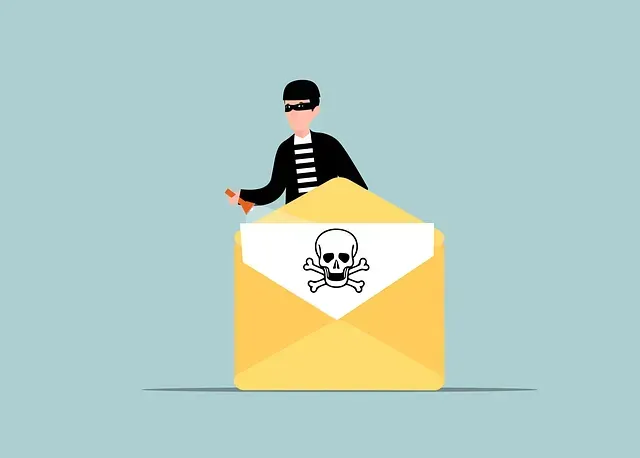
Six Essential Steps to Strengthen Email Security for South Florida Small Businesses

Email is the backbone of communication for small businesses—but it’s also one of the easiest ways for cybercriminals to get in. As cyberattacks grow more sophisticated, leaving your email unprotected could cost you time, money, and trust.
At Third-Eye Tech, we understand the challenges small business owners face when it comes to cybersecurity. Whether you’re handling customer inquiries or sending sensitive documents, your email must be secure. The good news? Protecting your email doesn’t have to be complicated. Here are six practical steps to safeguard your email and keep your business running smoothly.
1. Use Strong, Unique Passwords
We’ve all been tempted to use easy-to-remember passwords like “Password123” or our pet’s name. But weak passwords are like leaving the keys to your business out in the open.
Create Complex Passwords
A strong password is your first line of defense. It should include:
A mix of uppercase and lowercase letters
Numbers
Special characters
Avoid common phrases or anything personal, like your business name or birthdate. Instead, use a passphrase that’s easy for you to remember but tough for hackers to crack. For example, “Coffee$IsLife2024!” works great.
Use a Password Manager
Managing multiple passwords can feel overwhelming, but a password manager makes it easy. It generates and stores unique passwords for all your accounts, so you only need to remember one master password. Many of our clients have found this to be a game-changer for their business security.
Don’t Reuse Passwords
Using the same password across accounts might seem convenient, but it’s risky. If one account gets compromised, hackers could access them all. Make sure each account has its own unique password to minimize potential damage.
2. Enable Two-Factor Authentication (2FA)
Passwords alone aren’t always enough. Two-factor authentication (2FA) adds an extra layer of security by requiring a second form of verification. Even if someone gets your password, they won’t be able to access your account without that second step.
Choose a 2FA Method
Common 2FA methods include:
SMS codes sent to your phone
Authenticator apps that generate time-sensitive codes
Hardware tokens, which are physical devices that produce unique codes
Authenticator apps are especially popular because they’re secure and easy to use.
Set Up 2FA for All Accounts
Most email providers offer 2FA, and enabling it only takes a few minutes. Once it’s on, you’ll have peace of mind knowing your account is significantly harder to hack.
3. Be Careful with Email Attachments and Links
We’ve all seen those sketchy emails with attachments or links that don’t quite look right. It only takes one wrong click to let malware or phishing scams into your system.
Double-Check the Sender
Before opening attachments or clicking links, take a moment to verify the sender. Even if the email appears to be from someone you know, reach out to them through another channel to confirm if something seems off.
Scan Attachments
Always scan attachments with antivirus software before opening them. While many email platforms have built-in scanning features, having your own adds an extra layer of security.
Think Before You Click
Hover over links to see where they lead. If the URL looks strange or doesn’t match what you’d expect, don’t click it. It’s safer to navigate to the website directly in your browser.
4. Keep Your Email Software Updated
Outdated software is a goldmine for hackers. Regular updates help patch security vulnerabilities and keep your system running smoothly.
Enable Automatic Updates
Most email clients offer automatic updates, and enabling this feature ensures you’re always protected without having to think about it.
Manually Check for Updates
Even with automatic updates, it’s a good idea to occasionally check for updates yourself. Some patches may require manual installation, and staying proactive ensures you’re fully protected.
5. Use Encryption for Sensitive Emails
If you’re sending sensitive information—whether it’s financial data, customer details, or confidential business plans—encryption is essential. It ensures that only the intended recipient can read the email, even if it’s intercepted.
Encrypt Sensitive Messages
Many email providers offer built-in encryption, but third-party tools can provide even more robust protection. Encryption is especially important for industries like finance, healthcare, and legal services.
Make Sure Recipients Know How to Decrypt
Encryption only works if both parties know how to use it. If you’re sending an encrypted email, provide clear instructions to the recipient on how to access it securely.
6. Monitor Your Email Activity
Keeping an eye on your email activity helps you catch suspicious behavior early. The sooner you spot a problem, the faster you can act.
Set Up Alerts for Unusual Activity
Most email providers offer alerts for unusual login attempts or changes to account settings. These notifications can be lifesavers, giving you a heads-up before any real damage is done.
Review Your Account Activity Regularly
Make it a habit to check your login history and see what devices are connected to your account. If something doesn’t look right, change your password immediately and review your security settings.
Protect Your Business with Third-Eye Tech
Email security isn’t just about keeping your inbox tidy—it’s about protecting your business’s reputation, data, and bottom line. A single breach could lead to downtime, lost revenue, or worse, a damaged reputation.
At Third-Eye Tech, we’re committed to helping small businesses protect their email systems and stay ahead of cyber threats. Whether you’re a local shop or a growing business, we provide tailored solutions that fit your needs.
Contact us today to learn how we can secure your email and keep your business running smoothly.
Ready to take the first step? Download our free Email Security Checklist and start protecting your business today.
By following these steps, you’ll significantly reduce your risk of cyberattacks and ensure your communications remain secure. Don’t wait for a cyberattack to strike—start taking control of your email security now.



